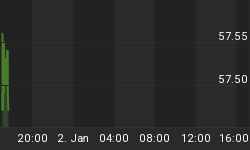10/11/2014 3:19:44 PM
It has been said that those who fail to plan are planning to fail. Whenever people bring up the topic of 'trading plans', what they are really discussing is a business plan for success. Trading is a business, and without a roadmap to follow you might fall prey to the many pitfalls you encounter during the trading journey.
A trading plan doesn't guarantee that you will be profitable or eliminate the dangers of the trading profession, but it certainly gives you an advantage and helps put the probabilities of success on your side.
So what will you find in a typical trading plan? For starters, it should answer the basic question of why you should succeed in this profession. It should outline the parameters and criteria you use to place and manage trades. It should show the reasoning and evidence to support why your strategies will be successful. It should show clearly how you plan to manage risk, both on a trade-by-trade basis and in your overall account. And lastly, is should show realistic goals that are achievable based on your plan.
Having these guidelines written down significantly increases the odds that you will actually follow them, as opposed to only having these ideas in your mind. The act of creating the trading plan, reviewing it, and updating it from time to time can keep you on track and reduce much of the anxiety that comes from trading.
Trading plans can be simple or complex depending on your personality and the type of trader you are. For a purely discretionary trader such as myself, the trading plan can be a combination of both. Since my methodology is based highly on experience and reading the market, my strategies outline the basic guidelines I use to identify setups rather than an exact list of criteria. However, when it comes to risk management I have very specific rules in order to protect my trading capital.
Some traders keep the entire plan about business, while others make it more personal, outlining items such as exercise habits and nutrition as a part of their overall success. A template for a trading plan may look like this:
A. Introduction to trading plan
a. Why am I trading?
b. What are my basic trading rules or philosophies?
c. What is my schedule for trading?
i. Time of day to place trades
ii. Reviewing finished trades and writing in journal
iii. Research or back-testing
B. An overview of the strategies being used
a. How I identify a setup with a probable edge
b. How I manage the trade from beginning to end
C. The instruments being traded
a. What markets I will trade
b. What strategy will be applied to these markets
D. How I will manage risk
a. How am I managing risk on each trade?
b. What is my daily or monthly loss limit?
c. What is my max draw-down I will allow before I stop and reevaluate my methodology?
d. How will I increase or decrease my position size based on performance?
e. How much am I allocating to my trading account(s)?
E. Goals
a. What is a realistic goal to reach six months from now?
b. What is my target win ratio, risk/reward etc.?
c. How will I increase my skill as a trader going forward?
Even if you are following someone else's trades, you can still outline the basics of their strategy and then detail your risk management methods.
You might also include a section that gauges your performance, meaning you keep track of how often you follow your trading plan perfectly, and how often you break your own rules because of emotions. This is particularly helpful when starting out, and can be something you write about each day in your trading journal.
Having everything clearly outlined and explained in a trading plan can help give you peace of mind. Instead of waiting for circumstances to occur, you are being proactive and putting a plan is place beforehand that tells you exactly what to do in order to preserve your capital. And since the trading profession is largely psychological, a trading plan can go a long way toward keeping your emotions in check as you continue your journey as a trader.
















